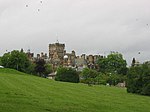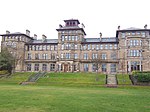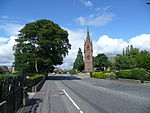Edinburgh City Hospital

The Edinburgh City Hospital (also known as the Edinburgh City Hospital for Infectious Diseases or the City Hospital at Colinton Mains) was a hospital in Colinton, Edinburgh, opened in 1903 for the treatment of infectious diseases. As the pattern of infectious disease changed, the need for in-patients facilities to treat them diminished. While still remaining the regional centre for infectious disease, in the latter half of the 20th century the hospital facilities diversified with specialist units established for respiratory disease, ear, nose and throat surgery, maxillo-facial surgery, care of the elderly and latterly HIV/AIDS. The hospital closed in 1999 and was redeveloped as residential housing, known as Greenbank Village.
Excerpt from the Wikipedia article Edinburgh City Hospital (License: CC BY-SA 3.0, Authors, Images).Edinburgh City Hospital
Rattray Grove, City of Edinburgh Greenbank
Geographical coordinates (GPS) Address Nearby Places Show on map
Geographical coordinates (GPS)
| Latitude | Longitude |
|---|---|
| N 55.915555555556 ° | E -3.2283333333333 ° |
Address
Rattray Grove 26
EH10 5TL City of Edinburgh, Greenbank
Scotland, United Kingdom
Open on Google Maps







